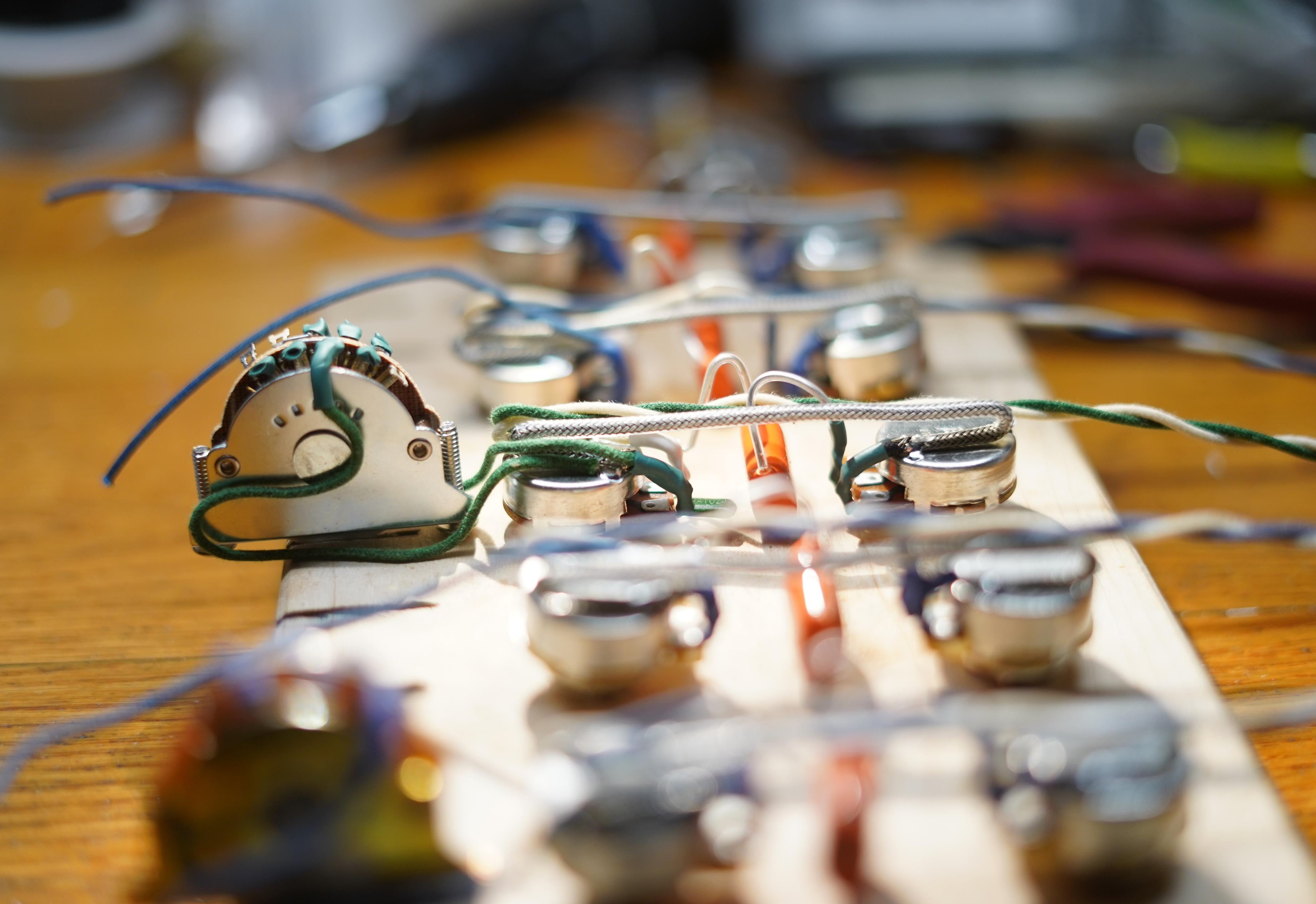
How to Actually "Upgrade" Your Guitar Wiring
What does "Upgrade" mean, and how do you actually “upgrade” your electronics?
I guess before we really dive deep, we should really define what Upgrading means in this particular usage. Upgrading in its simplest term is to “Improve from the Existing” which truthfully is a subjective improvement.
The hard part is from a mainstream perspective in the guitar world the term “upgrade” is peak clickbait marketing. You can’t find many things whether they are or are not an improvement that don’t use the term. The meaning is so diluted in the electronics world that in a lot of cases you are actually downgrading.
So how do you know when you are actually upgrading in the guitar electronics world?
First things first. You must accurately assess your current set up. It is way too easy for people to instantly blame everything on “bad or cheap parts” when those parts actually have more to do with durability than sound. Overall, the sound of your instrument solely has to do with the artistic design choices your manufacture chose when designing your instruments circuit.
So, when you want to change this, the best and easiest way is to narrow down what you want to change.
Do you hate the overall sound, or do you wish it had a little more clarity, or compression. Is the Audible taper good on the volume or tone? Do you wish you had a little bit more high end as you decreased the volume? Or, take it from a different perspective, maybe you love everything stock about your instruments sound but want a few more sound options from your pickups?
Each answer to these questions will narrow what you want to do from a circuit design standpoint.
- You hate the overall sound. Get new pickups. Don't think about a "style" but more about the EQ
- Want a little more clarity, or compression? Keep everything about your current circuit the same but change the pot value, higher if you want more clarity, or lower if you want more compression. - Learn more about this here
- Do you hate how the audible taper sounds? Try a different pot manufactures taper. (Not to be confused with an audible taper) Say your current set up has a linear volume, try an audio. Just beware of those selling “True Vintage correct” tapers as that’s more of a marketing gimmick in the passive circuit realm. - Learn more about this here
- Hate how the circuit sounds at lower volumes? Try a different filter circuit. Most current instruments feature a Modern low pass. So, changing to a high pass like Volume Bleed or 50s wiring can improve how your pickups sound at lower levels. - Learn more about this here
- Like everything stock about your current set up but want to improve or refresh the durability? Take notes of how your instrument circuit was designed. What values the pots or caps are. What pot manufacture taper did they use on every control. What filter circuit did they use. Once you find out all this information. Find parts that meet the same specs, but look for ones that have a "higher rated life" - Learn more about what make part high quality here
- Like everything stock about your current set up but want more sounds? Just like 5 get all the basics defined and then add on top of it. Adding things like Series, Phase, Coil cutting, etc can keep the same stock functionality but add a couple extra sounds.


3 comments
Very interested in buying your product. Do you have a business phone number where I can call you?
Eddie Espinosa
I would like to upgrade my univox hi-flier phase 3. I have two humbuckers Vol and tone 3 way toggle and amp jack all on the top
Prefer solidless. Can you recommend kit or make this
Raymond Van Winkle
I would like to purchase the Les Paul electronics that you have however is it possible to get pull pots on the volumes so that I could change the pick ups to single coil?
Eddie Cummings
Leave a comment
This site is protected by hCaptcha and the hCaptcha Privacy Policy and Terms of Service apply.